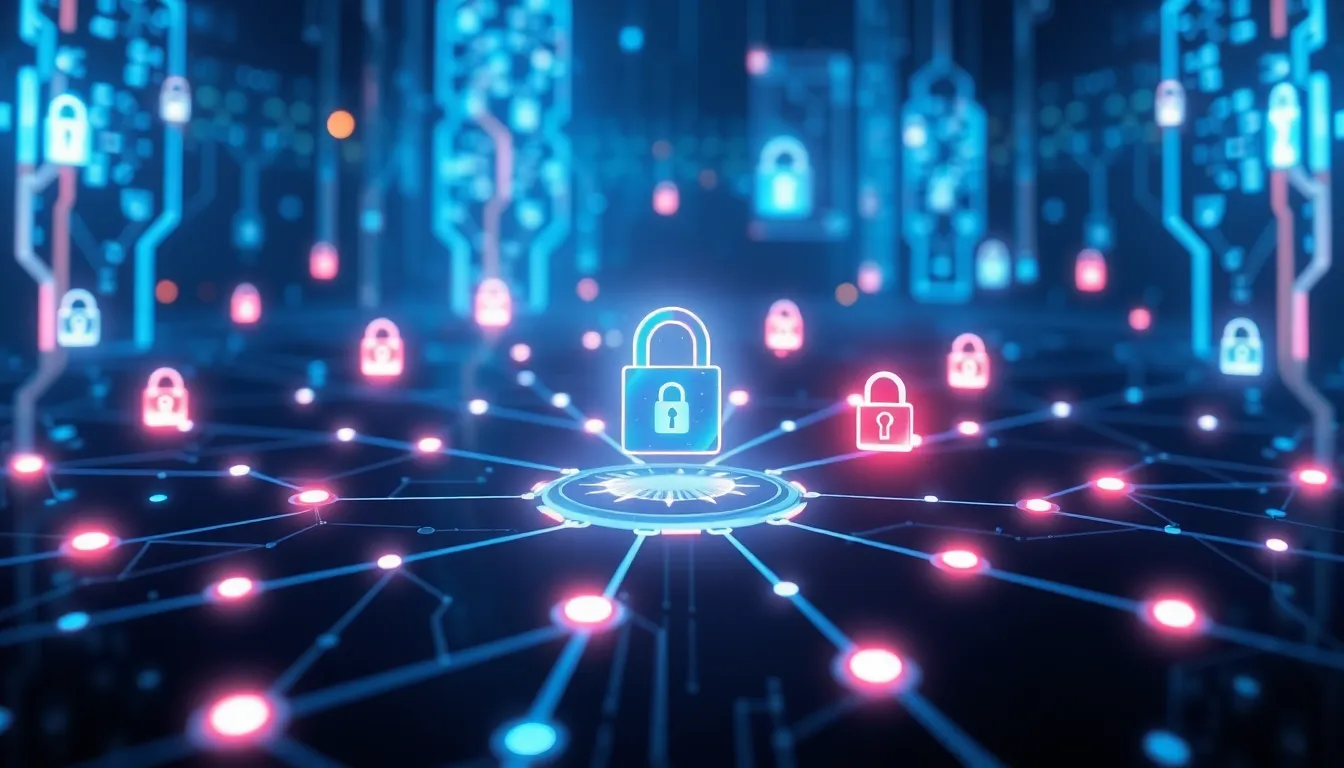
Blockchain Cybersecurity: The Superhero Defending Your Data Against Modern Threats
In a world where cyber threats loom larger than ever, blockchain cybersecurity emerges as the superhero we didn’t know we needed. Forget about capes and tights; this tech marvel offers a decentralized fortress that keeps hackers at bay while you sip your coffee. With data breaches making headlines faster than a speeding bullet, it’s time to take a closer look at how blockchain technology can safeguard sensitive information like a pro.
Blockchain Cybersecurity
Blockchain cybersecurity focuses on protecting decentralized networks and ensuring data integrity. This technology offers unique solutions for securing sensitive information against cyber threats, making it essential for today’s digital landscape.
What Is Blockchain?
Blockchain serves as a decentralized digital ledger technology for recording transactions. Each transaction appears as a block linked chronologically to create a chain. Data entered into a blockchain is immutable, meaning once recorded, it cannot be altered without altering subsequent blocks. This structure enhances transparency and accountability among participants. Businesses across various sectors rely on blockchain for secure data management and traceability.
The Basics of Cybersecurity in Blockchain
Cybersecurity in blockchain revolves around several fundamental principles designed to safeguard networks. First, encryption techniques protect data within the blockchain, ensuring only authorized users can access certain information. Second, consensus mechanisms like proof of work and proof of stake validate transactions, minimizing the risk of fraud. Third, smart contracts enforce agreements automatically, reducing potential vulnerabilities. Strengthening these elements enhances overall security and fosters trust in blockchain systems.
The Importance of Blockchain Cybersecurity

Blockchain cybersecurity plays a crucial role in safeguarding data as cyber threats continue to evolve. This technology not only enhances security but also builds consumer trust.
Protecting Data Integrity
Preserving data integrity remains a top priority in blockchain cybersecurity. Data stored on a blockchain is immutable, which means once a transaction is recorded, it cannot be altered or deleted. Cryptographic hashing secures information, ensuring that any attempt to manipulate it becomes evident. Also, via consensus mechanisms, only valid transactions receive confirmation, preventing fraudulent entries. This process fosters an environment where users can confidently exchange sensitive information, knowing their data integrity remains intact.
Preventing Unauthorized Access
Preventing unauthorized access is essential for maintaining a secure blockchain network. Authentication methods such as public-private key pairs ensure that only authorized users can access specific data. Additionally, smart contracts automatically enforce rules and access controls, helping mitigate potential threats. Layers of encryption provide further protection, making it difficult for attackers to breach systems. Thus, a combination of these strategies significantly reduces the risk of data breaches and reinforces overall network security.
Common Threats to Blockchain Security
Blockchain security faces various threats. Understanding these threats is essential for protecting decentralized networks.
Smart Contract Vulnerabilities
Smart contracts often contain code flaws that attackers exploit. Issues like reentrancy attacks occur when malicious actors manipulate smart contract execution. Developers must implement rigorous testing and audits to prevent such vulnerabilities. Additionally, improper access controls can lead to unauthorized modifications, jeopardizing user assets. Secure coding practices and thorough vetting processes significantly mitigate these risks. Platforms should prioritize continuous monitoring and adopt best practices to ensure smart contracts remain resilient.
Phishing Attacks
Phishing attacks target blockchain users by impersonating legitimate entities. Fraudulent emails or websites trick individuals into revealing sensitive information like private keys. Attackers leverage social engineering tactics to gain trust and manipulate victims. Users must maintain vigilance and verify sources before sharing personal data. Implementing two-factor authentication adds an extra level of protection against these attacks. Educating users about phishing techniques helps build awareness and fosters a more secure blockchain environment.
Best Practices for Blockchain Cybersecurity
Effective blockchain cybersecurity hinges on adopting best practices that protect against evolving threats. This section details crucial strategies vital for maintaining robust security.
Implementing Strong Authentication
Implementing strong authentication methods helps prevent unauthorized access. Utilizing multi-factor authentication significantly enhances security by requiring additional verification beyond just passwords. Incorporating public-private key cryptography provides a secure method for users to authenticate themselves with minimal risk. Employing biometric authentication, such as fingerprint or facial recognition, adds another layer, mitigating potential vulnerabilities. Regularly updating authentication procedures ensures systems remain resilient against emerging threats. Developing user education programs fosters awareness, enabling individuals to recognize phishing attempts and other deceptive practices.
Regular Security Audits
Conducting regular security audits is essential for identifying vulnerabilities in blockchain systems. Engaging third-party security experts can provide valuable insights into potential weaknesses and weaknesses. Establishing a clear auditing schedule enhances accountability and ensures thorough evaluations take place periodically. Utilizing automated tools can streamline the audit process, efficiently identifying inconsistencies and areas needing attention. Addressing findings promptly strengthens the overall security posture and builds consumer trust. Continuous improvement through these audits keeps blockchain systems secure against evolving cyber threats.
Future Trends in Blockchain Cybersecurity
The landscape of blockchain cybersecurity continues to evolve. Emerging technologies play a significant role in enhancing security measures, protecting assets, and fortifying decentralized networks.
Advances in Cryptography
Cryptography advancements significantly bolster blockchain security. New algorithms provide enhanced encryption standards, making unauthorized access more difficult. Techniques like zero-knowledge proofs enable transactions to verify without revealing personal data. Encryption methods evolve as threats grow, ensuring data privacy and integrity. Elliptic curve cryptography offers improved security with smaller key sizes, optimizing performance while maintaining strength. Developers prioritize implementing these cryptographic enhancements to combat evolving cyber threats.
The Role of Artificial Intelligence
Artificial intelligence transforms blockchain cybersecurity by automating threat detection. AI analyzes vast data sets in real-time, identifying unusual patterns that signal possible breaches. Machine learning models adapt to emerging threats, improving their accuracy over time. Security systems powered by AI integrate seamlessly within blockchain networks, providing proactive responses to potential vulnerabilities. Enhanced predictive analytics give organizations insight into future attacks. As blockchain technology and AI converge, they significantly strengthen security protocols and enhance overall user trust.
Conclusion
Blockchain cybersecurity stands as a vital shield against the evolving landscape of cyber threats. Its decentralized nature not only protects sensitive data but also fosters trust among users. As the technology continues to advance, adopting best practices and staying informed about potential vulnerabilities becomes crucial.
Organizations must prioritize robust authentication methods and regular security audits to safeguard their networks. The integration of emerging technologies like AI and advanced cryptographic techniques will further enhance security measures. By embracing these innovations, stakeholders can effectively mitigate risks and ensure the integrity of their blockchain systems.
